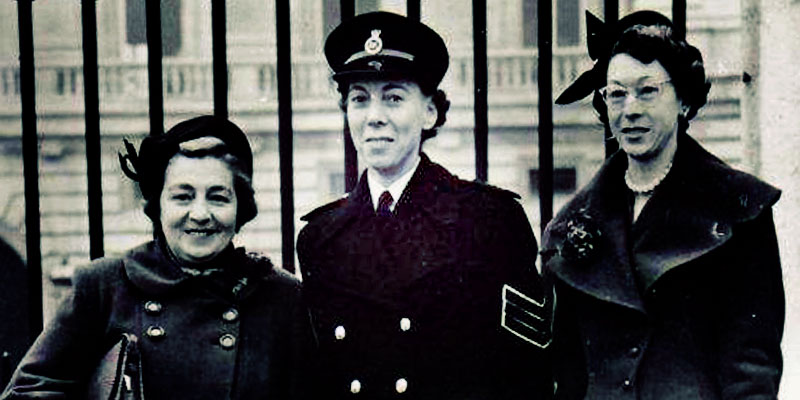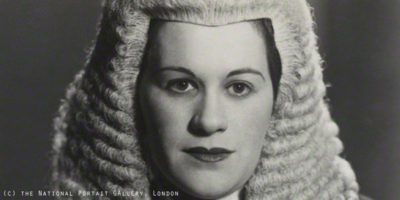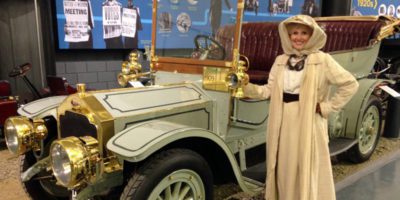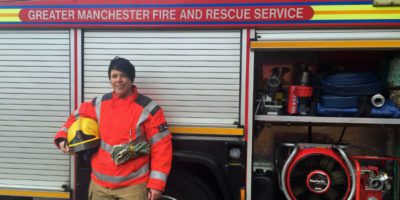PC Katie Dennell is one of the Metropolitan Police Service’s youngest police officers, having begun her training in September 2015 and taken up her first role at Islington Police Station at the start of February 2016.

“…I would encourage all girls and women to apply for the police if they would like to pursue a career as a police officer. It really is exactly what I expected when I signed up and there is no gender discrimination…”
Becoming a police officer to help, protect and serve
I only joined the Metropolitan Police and started my training at Hendon Peel Centre in September 2015 and then joined Emergency Response Team at Islington Police Station on 1st February 2016, so I have only been out for just under two months. I wanted to join the police to make a difference and to help, serve and protect the community in which I work in. I wanted to have that rewarding feeling at the end of a shift that I have made a difference and knowing that each day you will respond to something different is what excited me, making me want to join.
My role on a day to day basis
I’m currently on ‘Emergency Response Team A’, so day to day I’m out with another officer and our main responsibility is to respond to I and S [‘immediate response’ and ‘significant priority’] grade emergency calls. These calls can vary from domestic violence, thefts, anti-social behaviour and missing persons.
In addition to this, we also assist other agencies including Social Services and the London Ambulance Service with patients, including those suffering with mental health problems. As well as responding to emergency calls I also carry out proactive policing with stop and searches if the moment arises and engage with the public.
My greatest role model on the force
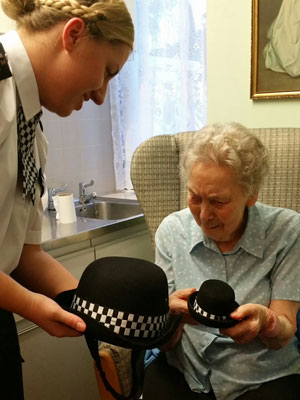
Ethel Bush is my greatest role model after visiting her for her 100th birthday along with Assistant Commissioner Helen King and being inspired by her story which is also presented in the London Museum. She really is someone to aspire to.
Ethel’s story shows great bravery and dedication to the job, and her perseverance to catch the suspect in the case which she received recognition for is what policing is all about. [In 1955, following attacks on several women in Croydon, Ethel, a sergeant, volunteered to act as a decoy, along with many colleagues which led to the capture of the assailant. Following the attack Ethel was one of two Metropolitan Women Police who were the first to be awarded the George Medal for bravery.]
When meeting Ethel and speaking to her it was clear that she was devoted to her job while serving as a sergeant at Croydon and she went above and beyond of what was expected of her to help, serve and protect her community, which is one of the reasons I wanted to join the police.
Ethel said to me: “There is a fine line between bravery and foolishness,” when discussing the incident she was involved in and that will stay with me for my whole career throughout the police as it really does reflect decisions that I make as an officer on a day to day basis.
Recruiting, retaining and promoting female officers
We have long recognised the need to make more progress in recruiting, retaining, and promoting females and officers from minority backgrounds.
We know BME [Black and minority ethnic] women are underrepresented in the Met and have introduced a number of changes to encourage such individuals to join. This includes the Community Ambassador Outreach programme, new positive action development opportunities, and a range of on line tools aimed to tackle the perceived barriers from female BME applicants such as fear of personal safety.
We also have a range of flexible working policies. We have strengthened our exit interview surveys and are paying close attention to the impact of some of our organisational restructures make to ensure they don’t have an adverse impact on individuals with caring responsibilities.
Looking nationally the Met is way ahead of similar sized forces in England and Wales. We have seen an increase in BME officers from 7% to 28% since 2006 but as our Commissioner has pointed out if that growth continues at the current rate, the representation we seek will not happen in our life time or, indeed, this generation so there needs to be some radical thinking in coming years.
Our Police Now programme is attracting graduates and will employ them for two years in our communities as Dedicated Ward Officers and we are taking a leading role in the national Direct Entry Superintendent programme. We have just made offers to the next cohort of officers to join the scheme and have achieved significant success in attracting more BME graduates onto the programme than the national average.
There are no variations in the way women and men are recruited nowadays on the basis of physical differences. Being a female officer who has recently been through the recruitment process I felt I was treated as equally as any another applicant, male or female. Both male and female officers undertake the same fitness test when being recruited with no differences. All training received, whether it be physical or intellectual, is exactly the same.
Advice for girls and women looking to get into the police
I would encourage all girls and women to apply for the police if they would like to pursue a career as a police officer. It really is exactly what I expected when I signed up and there is no gender discrimination. Its hard work but determination and perseverance gets you through and I have been continually supported so far by my colleagues and supervisors.
Coming up for me and the Metropolitan Police Service
I have only just started my career in the Met Police and have still got nearly two years on probation before I can further my career. I am yet undecided on what area I would like to focus on later on in my career and I’m hoping some more experience in the job will help me make the decision when it comes to that time. At this moment in time I’m enjoying my time on Emergency Response Team and gaining experience to help aid my personal development.
Historical timeline of women in the Metropolitan Police Service
1919 – Women Police established in London, the first Metropolitan Police Women
Patrols went onto the streets on 17th February 1919 – they had no power of arrest. This fledgling force of police women weren’t allowed to carry truncheons or handcuffs but were instead equipped with umbrellas
1923 – Women police in London were given power of arrest
1928 – Women over 21 given the right to vote
1937 – Women police authorised to take fingerprints
1939 – Outbreak of war – Women police officers take on extra duties and responsibilities. Number of female officers: 128 Uniform and 8 CID
1948/9 – Women admitted to the Police Federation. Age limit lowered to 20. Number of female officers: 235 Uniform and 21 CID
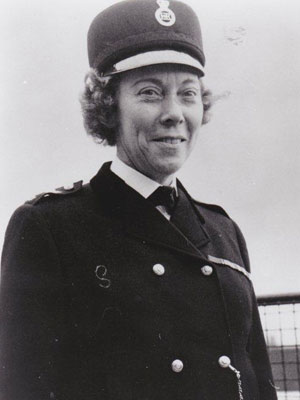
1955 – Awards of the George Medal to WPS Ethel Bush and WPC Kathleen Parrott for courage in service during an investigation into sex offences
1959 – Number of female officers: 429 Uniform and 49 CID
1970 – Women appointed to Mounted Branch
1971 – First women appointed as dog handlers
1985 – Modern uniforms introduced, with reinforced Bowler hat
2009 – Cressida Dick appointed as Assistant Commissioner for Specialist Crime. Britain’s highest ever ranking woman police officer in the MPS
National Statistics – Police workforce, England and Wales
There were 35,738 female police officers in the 43 police forces on 31st March 2015, an increase of 85 (0.2%) compared with a year earlier.
Diversity statistics can be found here.
http://content.met.police.uk/Home
https://twitter.com/metpoliceuk
https://www.facebook.com/metpoliceuk

